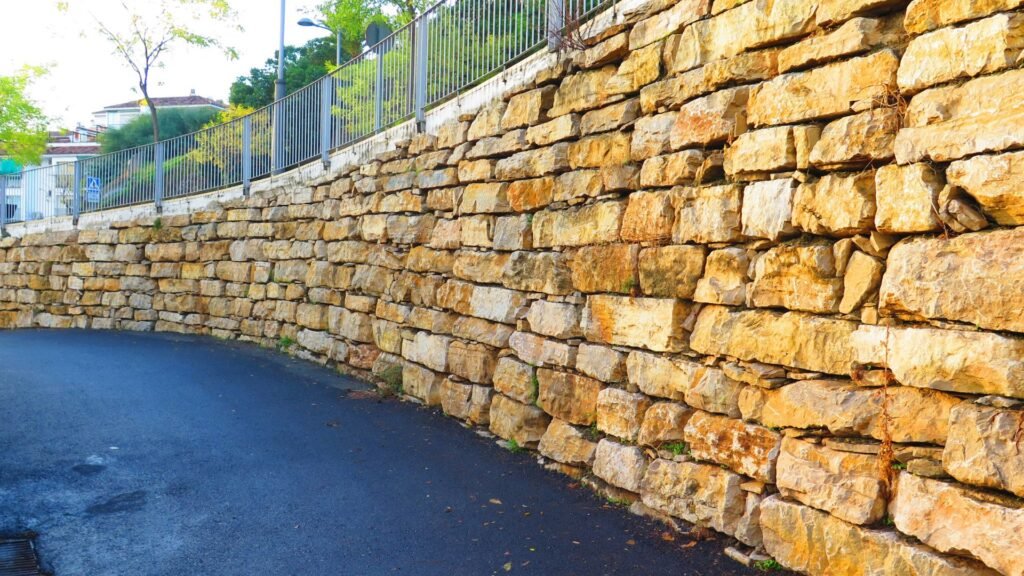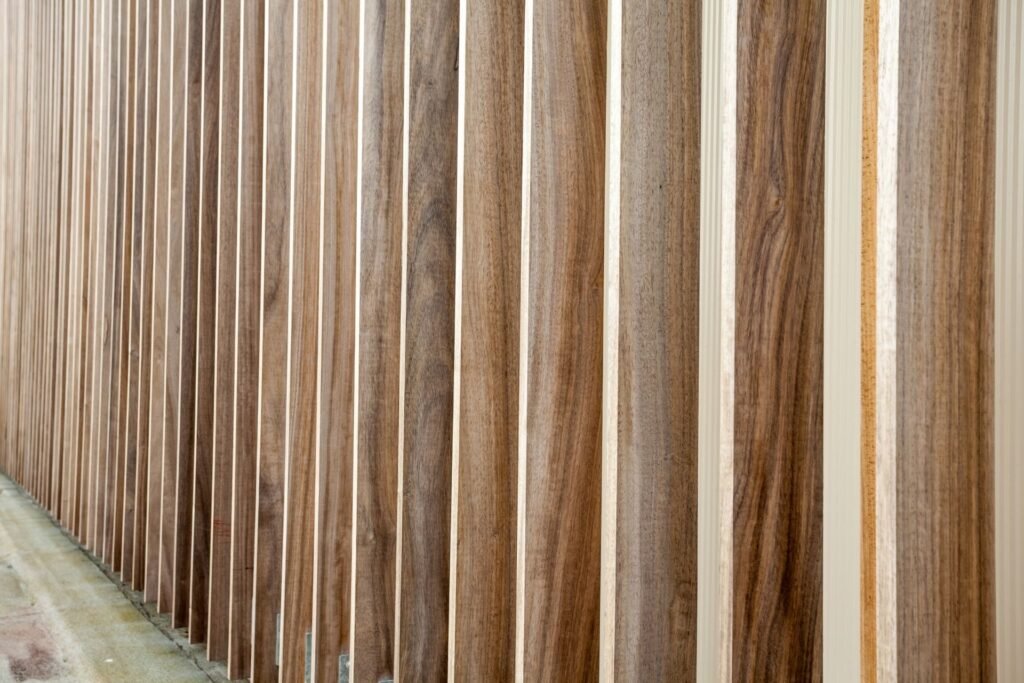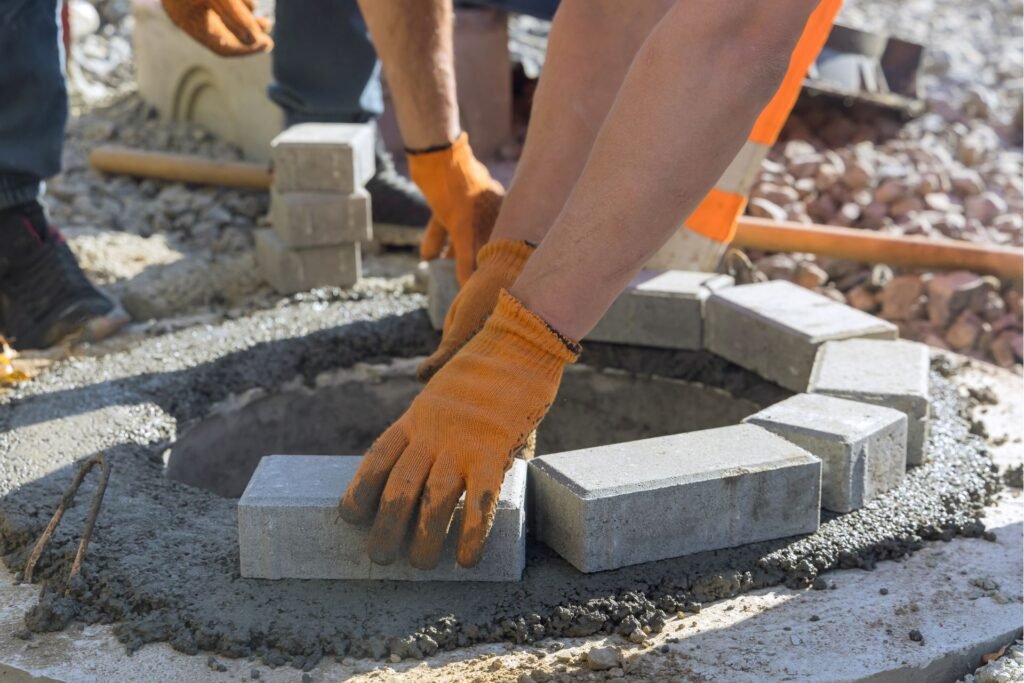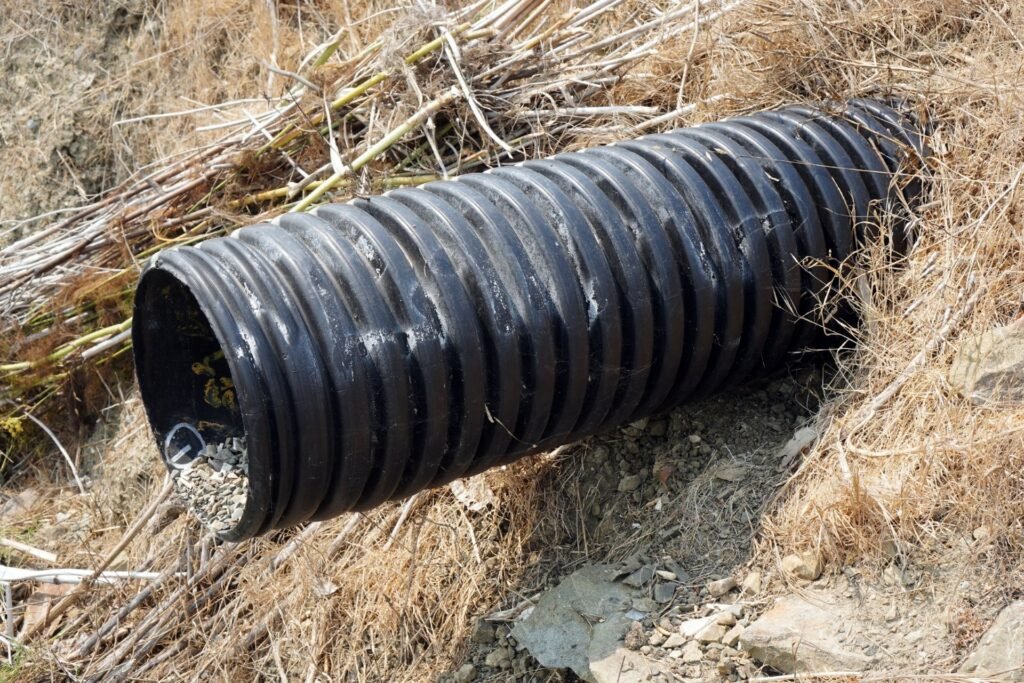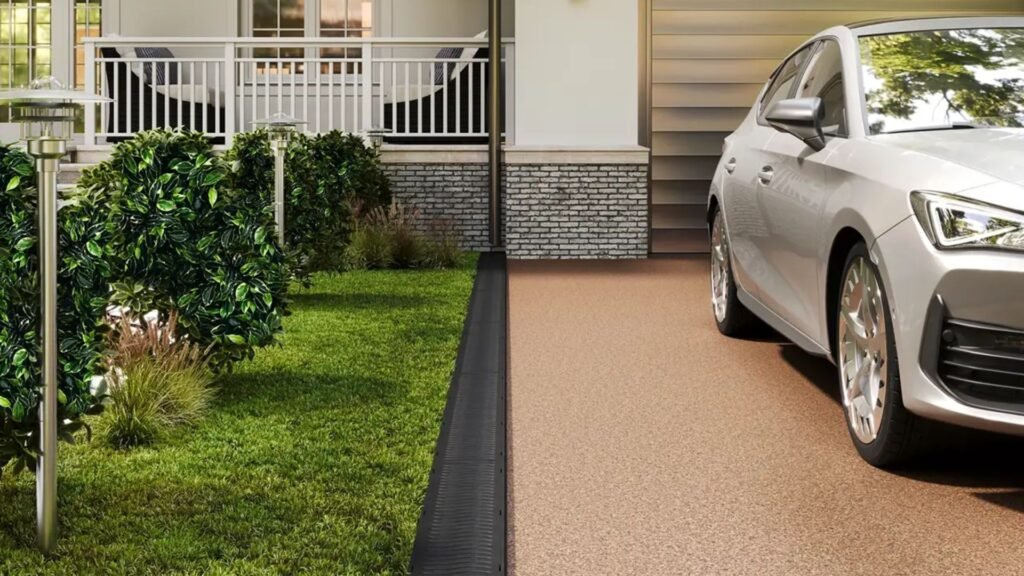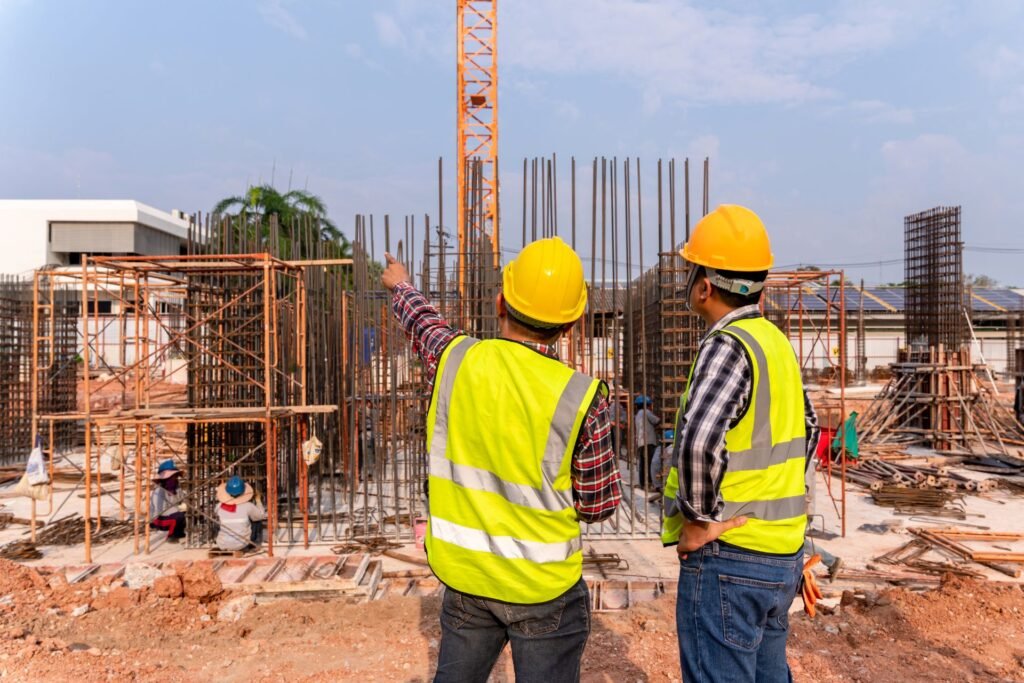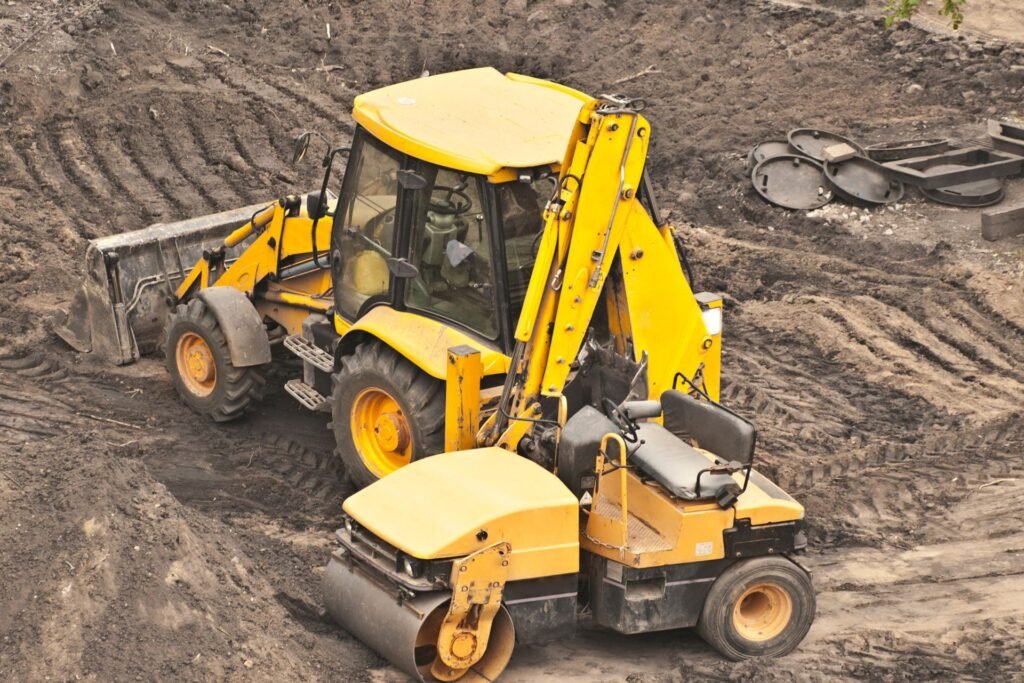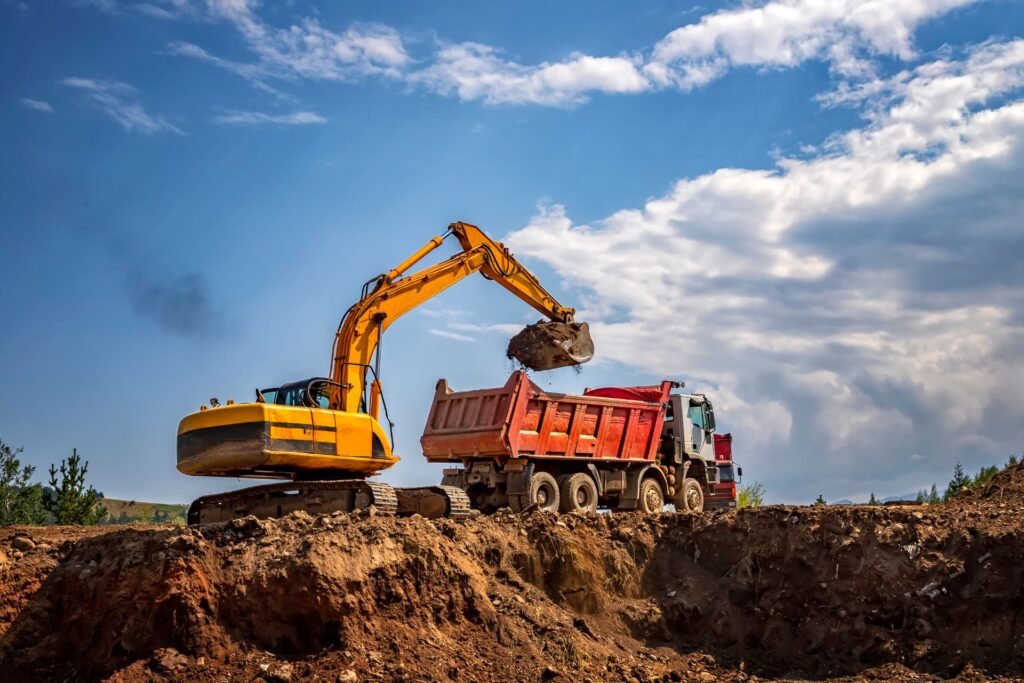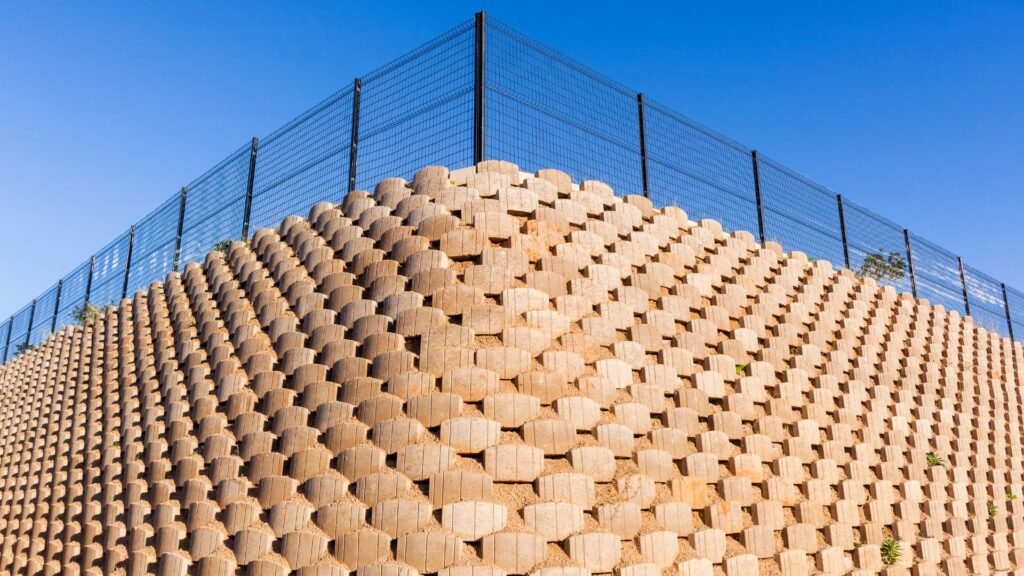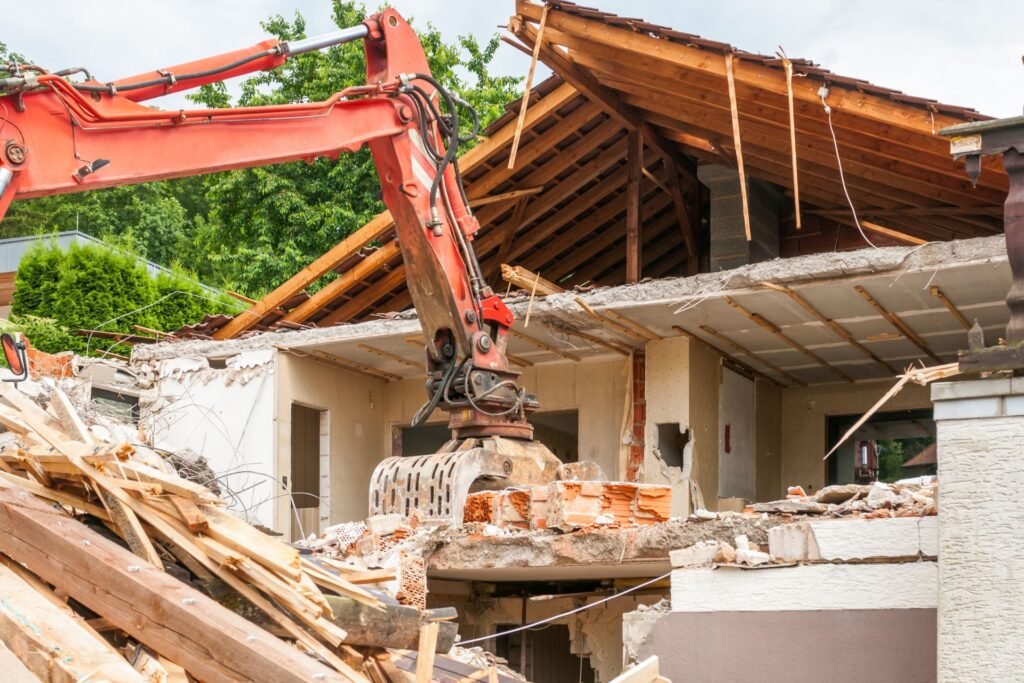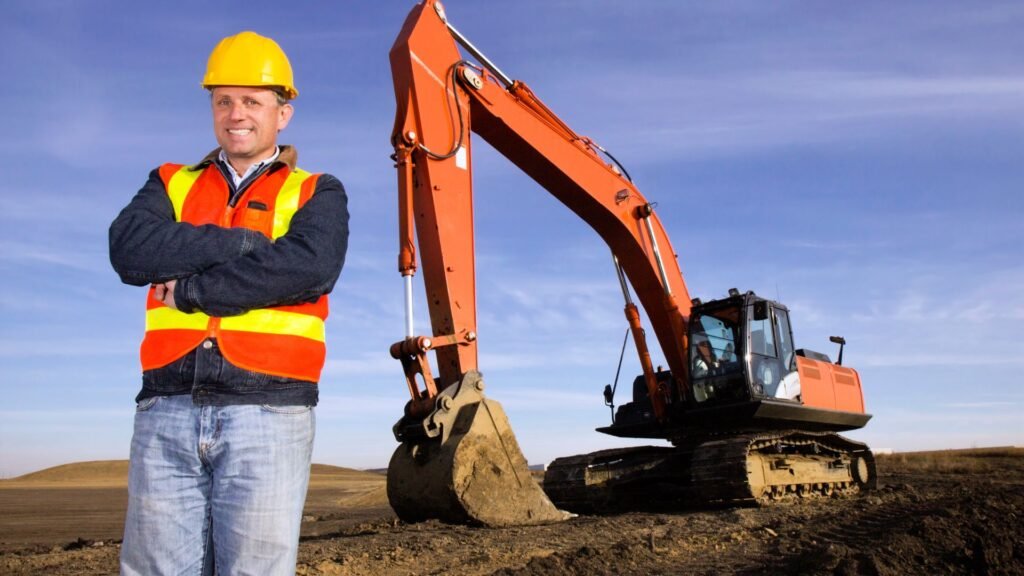Welcome to our comprehensive guide on Keystone retaining walls, where we cover all the essential information you need to know about these strong, adaptable buildings that may completely change your outdoor areas. Keystone retaining walls provide the ideal balance of practicality and visual appeal, making them ideal for anybody trying to manage sloped terrain, improve the aesthetic appeal of their landscape, or do it yourself enthusiast. This article will cover the several advantages of Keystone retaining walls, their various varieties, a step-by-step installation tutorial, and professional advice on upkeep and design concepts. By the time it’s over, you’ll know everything you need to know to make the best choice and design a breathtaking, long-lasting landscape that stands
Durable, modular wall systems called Keystone retaining walls are made to control slopes, stop soil erosion, and improve the attractiveness of landscapes. Constructed from interlocking concrete blocks, they provide a strong, low-maintenance, and aesthetically pleasing option for any outdoor space, making them suitable for both commercial and residential applications.
Table of Contents
What Are Keystone Retaining Walls?
Definition and Overview
Due to its practical and decorative qualities, stone retaining walls are a common option in construction and landscaping. The modular concrete blocks used to build these walls are intended to manage uneven terrain, hold back dirt, and stop erosion. Keystone retaining walls are distinctive due to its interlocking block design, which guarantees a sturdy, aesthetically pleasing construction.
Engineers were searching for a means to combine the modular construction’s ease of use and flexibility with the robustness of traditional retaining walls at the beginning of the 1980s. They came up with the concept of Keystone retaining walls as a result. The word “Keystone” describes the wedge-shaped stone that sits in the center of an arch and represents the essential role that these structural components play in creating sturdy, long-lasting walls. The construction of retaining walls was drastically altered by this invention, opening the door to more creative layouts and practical installations.
Over time, keystone retaining walls have evolved to meet changing landscape requirements and aesthetic preferences. These days, they have a wide range of shapes, hues, and textures. These days, they are a common feature of both commercial and residential developments, ranging from little garden beds to large infrastructure complexes.
Why Choose Keystone Retaining Walls?
Strength, durability, and aesthetic appeal make Keystone retaining walls very popular. One of the primary reasons for their widespread use is their adaptability to various terrain challenges, such as leveling a sloped yard, creating terraces, or supporting large-scale infrastructure projects. Because of their modular construction, these walls are easy to install and modify, making them a wonderful choice for both inexperienced and seasoned landscapers.
One of the best things about Keystone retaining walls is its versatility. They provide for a multitude of design options because they may be built in various sizes, forms, and configurations. Keystone bricks can fulfill your design for a straight wall, a curved construction, or even multi-level terraces. Because of their adaptability, they can be used for a wide range of purposes, including planters and garden edging as well as structural retaining walls that support commercial buildings and roadways.
Another important benefit of Keystone retaining walls is its durability. These blocks are built to last the test of time since they are made of premium concrete that is resistant to weathering, erosion, and even seismic activity. Their strength is increased by the interlocking mechanism, which guarantees that the wall will hold up even when subjected to extreme strain or large weights. Because of their durability, they are a great option for landowners seeking a long-term fix for soil retention and stabilizing their landscape.
Keystone retaining walls are not only quite useful but also very aesthetically pleasing. You may adapt the wall’s color to the existing landscape or architectural style because they are available in a variety of colors, textures, and finishes. There is a Keystone block option to suit your style, whether you like a rugged texture, a smooth modern finish, or a natural stone appearance. This artistic adaptability raises the value of your home by improving curb appeal and designing eye-catching outside areas.
Keystone retaining walls are an excellent choice for anyone looking to combine functionality, durability, and beauty in their landscape design. Their ability to adapt to different settings, withstand environmental challenges, and enhance visual appeal makes them a top choice for retaining wall solutions in both residential and commercial landscapes. Whether you’re tackling a small garden project or a large-scale construction endeavor, Keystone retaining walls offer the perfect balance of form and function.
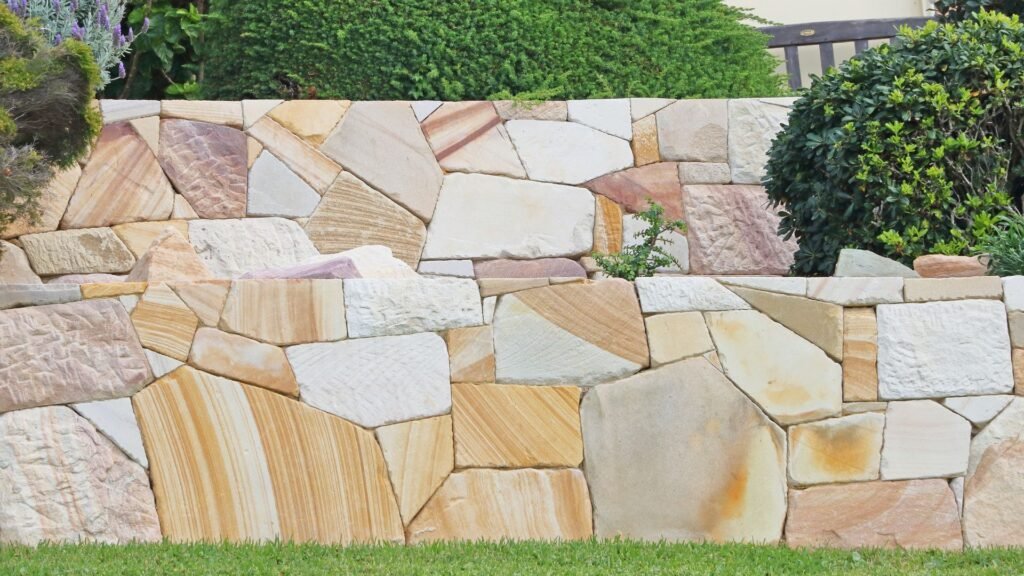
Benefits Of Keystone Retaining Walls
Over time, keystone retaining walls have become more and more well-liked due to their adaptability and usefulness in landscaping. This section explores the many advantages of Keystone retaining walls, including its low maintenance requirements, long lifespan, visual attractiveness, and environmental benefits. When designing their outside spaces, homeowners and landscape designers can make more educated judgments if they are aware of these advantages.
Aesthetic Appeal
Enhancing the attractiveness of any landscape is one of Keystone retaining walls’ most notable advantages. These walls serve as a decorative element that can greatly improve a property’s aesthetic appeal in addition to being useful. Because keystone retaining walls are very adjustable to suit any aesthetic desire, they are available in a variety of designs, colors, and textures. There is a Keystone retaining wall style that will fit your architectural vision, whether you’re going for a clean, modern design or a rustic, natural appearance.
For example, a variety of finishes, like tumbled, split-face, and smooth, are available; each has a distinct appearance and texture. Furthermore, because these walls are modular, you can create imaginative designs with them, like curving walls, terraces, or multi-level buildings that blend in well with the natural curves of your terrain. This adaptability lets you add unique elements that express your personal style and taste while also improving the overall appearance of your outdoor area.
Functionality and Durability
Beyond aesthetics, Keystone retaining walls are very useful, particularly in challenging landscape situations. They are incredibly effective at preventing landslides, stabilizing soil on sloping terrain, and reducing erosion. By keeping soil in places that are susceptible to erosion or heavy precipitation, these walls help to maintain the natural integrity of your surroundings.
Keystone retaining walls are incredibly strong and durable due to their superior construction materials. Keystone walls, in contrast to other retaining wall solutions, are made to endure weather and time with little need for replacement or maintenance over time. They are perfect for both domestic and commercial uses because of their sturdy structure, which guarantees that they can withstand heavy weights and pressures. Because of their durability, you can be sure that your retaining wall will be strong and dependable for many years after it is erected.
Low Maintenance
Low maintenance needs are one of the main benefits of Keystone retaining walls. In contrast to other retaining wall designs, Keystone barriers require substantially less maintenance. Traditional walls are frequently damaged by weathering, pests, and other environmental conditions, although the materials used in their construction are resistant to these effects. Over time, this resistance results in fewer repairs being needed and cheaper maintenance expenses.
Furthermore, simplicity is a key consideration in the design of Keystone retaining walls. Their construction incorporates an interlocking system that enhances their robustness and facilitates any necessary maintenance. It is simple to replace a damaged block without having to take the entire structure apart. This low care requirement is a big selling feature for homeowners who would rather have a lovely, useful landscape without having to worry about ongoing maintenance.
Environmental Benefits
In addition, keystone retaining walls have a number of environmental advantages that make them a sustainable option for landscaping projects. First off, the environmental impact of the construction of these walls is often minimized because they are frequently made of sustainable materials like natural stone or reclaimed concrete. By using sustainable materials, your landscaping project can reduce its carbon footprint and promote environmental sustainability.
Additionally, Keystone retaining walls are designed to promote proper drainage and prevent soil erosion. The strategic placement of these walls allows water to flow naturally through the landscape, reducing the risk of flooding and water damage. By preventing soil erosion, they help maintain the health of your soil and the overall stability of your landscape. This not only protects your property but also supports the surrounding ecosystem by preserving natural water courses and preventing sediment runoff into local waterways.
Enhancing outdoor spaces’ shape and function can be accomplished with ease using keystone retaining walls, which are a flexible and efficient solution. Their numerous advantages, ranging from longevity and visual appeal to low care and eco-friendliness, make them an excellent option for both homeowners and landscapers. Keystone retaining walls offer a dependable, eye-catching, and environmentally friendly solution that may accommodate a range of requirements and tastes when thinking about installing one for your upcoming landscaping project.

Types Of Keystone Retaining Walls
Retaining walls are essential in landscaping and construction projects, serving the crucial function of holding back soil and preventing erosion. When choosing the right retaining wall for your project, it’s important to understand the different types available. This section will explore three main types of Keystone retaining walls: Gravity Retaining Walls, Reinforced Retaining Walls, and Segmental Retaining Walls. Each type comes with unique characteristics, advantages, and ideal use cases. Let’s dive into the details to help you make the best choice for your project.
Gravity Retaining Walls
Description and Ideal Use Cases
Gravity retaining walls rely on their mass and weight to resist the pressure exerted by the soil behind them. They are typically made from heavy materials like concrete, stone, or masonry. These walls are designed to lean slightly backward into the slope to enhance stability. The basic principle is that the weight of the wall counteracts the force pushing against it.
Gravity retaining walls are ideal for lower-height applications where there is plenty of space. They are commonly used in residential landscaping projects to create garden beds, terraces, or small retaining walls along pathways and driveways.
Pros and Cons
Pros:
- Simplicity in Design: These walls do not require complex engineering or reinforcement, making them easier to design and build.
- Variety of Materials: There is flexibility in choosing materials, allowing you to match the wall with existing landscaping or architectural styles.
- Cost-Effective for Smaller Projects: Due to their straightforward construction, gravity walls are often a more affordable option for smaller, lower-height projects.
Cons:
- Limited Height Capacity: Gravity walls are not suitable for taller walls or areas with significant soil pressure due to their reliance on mass.
- Requires Ample Space: The base of the wall must be wide enough to counterbalance the force exerted by the soil, which can take up valuable space in a yard or garden.
- Potential for Instability: Without proper drainage, water can accumulate behind the wall, increasing pressure and potentially leading to wall failure.
Reinforced Retaining Walls
Overview of What Makes These Walls Strong and Suitable for Larger Projects
Reinforced retaining walls are designed to be stronger and more durable, making them ideal for larger projects where soil pressure is significant. These walls incorporate reinforcement materials like steel bars, geogrids, or earth anchors to enhance their ability to withstand heavy loads and resist lateral pressure from soil.
Reinforced walls are typically constructed using poured concrete or concrete blocks with internal steel reinforcements. The added strength allows these walls to be built higher and in more challenging conditions, such as on slopes or areas with unstable soil.
Pros and Cons
Pros:
- Enhanced Strength and Stability: The reinforcement materials used in these walls provide superior strength, allowing for taller structures and greater resistance to soil pressure.
- Versatility in Design: Reinforced walls can be customized to meet specific engineering requirements, making them suitable for various applications, from commercial projects to residential landscaping.
- Longevity: Properly constructed reinforced walls are highly durable and can last for decades with minimal maintenance.
Cons:
- Higher Cost: The materials and labor required for reinforced retaining walls make them more expensive than gravity walls, especially for smaller projects.
- Complex Construction: Building a reinforced wall requires careful planning, precise engineering, and skilled labor, which can increase construction time and costs.
- Potential for Corrosion: If not properly waterproofed, the steel reinforcements within the wall can corrode over time, compromising structural integrity.
Segmental Retaining Walls
Explanation of the Modular Block Design
Segmental retaining walls (SRWs) are built by dry stacking concrete blocks that fit together without the need for mortar. Since the individual blocks can be stacked to fit a variety of shapes and patterns, the modular block design promotes flexibility in construction. Because of the way these blocks are designed, they may be locked together to form a sturdy, solid structure that is resistant to lateral earth pressures.
Because of its visual appeal and ease of installation, segmental walls are particularly well-liked. They can be used to create garden terraces, stabilize slopes, or even build substantial retaining walls in public areas, for both commercial and residential purposes.
Common Applications and Advantages
Segmental retaining walls are commonly used in landscaping projects where flexibility in design and ease of installation are essential. They are ideal for garden walls, terraces, pathways, and larger structural applications like retaining hillsides or stabilizing embankments.
Advantages:
- Ease of Installation: The modular design allows for quick and straightforward installation, often without the need for heavy machinery or specialized skills.
- Aesthetic Flexibility: Segmental walls come in various colors, shapes, and textures, making them a versatile choice for enhancing the visual appeal of a landscape.
- Durability and Low Maintenance: Made from high-quality concrete, these blocks are resistant to weathering and erosion, ensuring long-term durability with minimal upkeep.
- Environmentally Friendly: The design of SRWs allows for natural drainage, reducing water buildup and pressure behind the wall, which helps maintain the health of surrounding soil and vegetation.
Comparison of Types
Choosing the right retaining wall depends on several factors, including the height of the wall, soil conditions, budget, and desired aesthetic. Gravity retaining walls are best for low-height applications and offer simplicity and cost-effectiveness. Reinforced retaining walls provide the strength needed for taller structures and challenging conditions but come at a higher cost and complexity. Segmental retaining walls offer a good balance of durability, aesthetic flexibility, and ease of installation, making them a versatile choice for various projects.
By understanding the differences between these types of retaining walls, you can select the most suitable option for your landscaping or construction needs. Each type has its own set of benefits and considerations, so evaluate your specific requirements and site conditions to make the best decision.

How To Plan Your Keystone Retaining Wall Project
Planning a Keystone retaining wall project requires careful consideration of several key factors to ensure the structure is both functional and aesthetically pleasing. This guide will walk you through the essential steps to plan your project effectively, ensuring that your retaining wall meets your landscape needs and stands the test of time.
Assessing Your Landscape Needs
The first step in planning your Keystone retaining wall project is to thoroughly assess your landscape needs. Understanding the specific requirements of your property is crucial because it directly influences the design and construction of your retaining wall. Start by evaluating the purpose of the retaining wall. Are you looking to prevent soil erosion, create a level area for a garden, or enhance the visual appeal of your landscape? Identifying the primary purpose will help you determine the appropriate type and size of retaining wall.
Once you have a clear understanding of your needs, consider the topography of your land. Is your property on a slope, or does it have uneven terrain? If so, a taller and more robust retaining wall may be necessary to support the soil and prevent erosion. Conversely, a lower, decorative wall might suffice for flat areas where aesthetics are the main concern. Additionally, consider factors like the soil type, climate, and any potential water runoff issues, as these can impact the wall’s stability and longevity. By taking the time to assess your landscape needs, you can make informed decisions that will help you create a retaining wall that is both practical and visually appealing.
Choosing the Right Materials
Selecting the right materials is a critical step in the construction of your Keystone retaining wall. The materials you choose will determine the wall’s durability, maintenance requirements, and overall appearance. Common materials used in Keystone retaining walls include concrete blocks, natural stone, and brick. Each of these materials has its advantages and drawbacks, so it is essential to consider your specific needs and preferences.
Concrete blocks are a popular choice due to their strength, versatility, and ease of installation. They are available in various shapes, sizes, and colors, allowing you to create a customized look for your retaining wall. Natural stone, on the other hand, offers a more traditional and rustic appearance, blending seamlessly with the natural landscape. However, it can be more expensive and labor-intensive to install compared to concrete blocks. Brick is another option, providing a classic look that is both durable and low-maintenance.
When choosing materials, consider not only the aesthetic appeal but also the durability and suitability for your specific environment. For instance, if you live in an area with heavy rainfall, selecting a material that can withstand moisture and prevent water damage is essential. Additionally, consider the long-term maintenance requirements of each material. Some materials, like natural stone, may require periodic sealing to maintain their appearance, while others, like concrete blocks, are relatively low-maintenance. By carefully selecting the right materials, you can ensure your retaining wall is both beautiful and durable.
Design Considerations
Another important thing to think about is how your Keystone retaining wall will be designed. Elements like height, length, and placement all have a big impact on how well the wall works and looks. Based on your landscape’s requirements, first decide on the retaining wall’s ideal height and length. For steeper slopes, for instance, a taller wall could be required, although a shorter wall might work well in flatter terrain.
Think about the retaining wall’s position in addition to its size. It should be positioned such that it fulfills its intended function and blends in with the overall landscape design. For example, the wall should be placed at the bottom of a slope if preventing soil erosion is the main objective. The wall needs to be positioned where it gets enough sunshine if the goal is to construct a garden terrace.
Another important design consideration is drainage. Proper drainage is essential to prevent water buildup behind the retaining wall, which can cause the wall to fail over time. Incorporate drainage solutions such as weep holes, drainage pipes, or gravel backfill to ensure water is effectively channeled away from the wall. By carefully considering these design factors, you can create a retaining wall that is both functional and visually appealing.
Consulting with Professionals
While it is possible to plan and construct a Keystone retaining wall on your own, there are times when it is beneficial to consult with professionals. Hiring a landscape designer or contractor can provide several advantages, especially for complex projects or those requiring specialized skills. A professional can help you assess your landscape needs, choose the right materials, and design a retaining wall that meets your specific requirements.
Professional assistance is particularly valuable when dealing with challenging terrain, such as steep slopes or areas with poor soil conditions. An experienced contractor can ensure the retaining wall is built to code and designed to withstand the unique challenges of your landscape. Additionally, professionals can help you navigate local regulations and obtain any necessary permits, saving you time and potential headaches.
Consulting with a professional can provide peace of mind and ensure your Keystone retaining wall project is completed successfully. Whether you choose to hire a professional or take on the project yourself, careful planning and attention to detail are essential for creating a retaining wall that enhances your landscape and stands the test of time.
By following these guidelines, you can plan a Keystone retaining wall project that meets your needs and enhances the beauty and functionality of your outdoor space.

Step-By-Step Guide To Installing A Keystone Retaining Wall
Installing a Keystone retaining wall might seem like a daunting task, but with the right approach and guidance, it can be a manageable and rewarding project. This guide will walk you through the process, from preparation to finishing touches, ensuring you have all the information needed to create a sturdy and visually appealing retaining wall.
Preparation and Planning
Before diving into the construction of your Keystone retaining wall, it’s crucial to start with thorough preparation and planning. This initial phase involves gathering the necessary tools and materials, and preparing the site for construction.
Gathering Tools and Materials:
To begin, you’ll need to gather all the essential tools and materials. These include Keystone blocks, gravel, a level, a shovel, a tamper, a wheelbarrow, landscape fabric, a string line, stakes, and a measuring tape. Having all these items ready will make the process smoother and prevent unnecessary delays. Make sure to choose high-quality materials, as they will impact the longevity and durability of your retaining wall.
Site Preparation Tips: Clearing, Leveling, and Marking the Area:
Site preparation is a critical step that sets the foundation for your entire project. Start by clearing the designated area of any vegetation, rocks, and debris. This step ensures a clean and manageable working environment. Next, level the ground where the retaining wall will be constructed. Use a shovel and tamper to create a flat and compacted surface. After leveling, use a measuring tape to determine the length and height of the wall. Mark the area with stakes and string lines to outline the position and ensure the wall is straight. This planning step is crucial for achieving a professional and clean final look.
Building the Base
The base of your retaining wall is the most critical component of the entire structure. A solid foundation ensures the wall’s stability and longevity, preventing it from shifting or collapsing over time.
Importance of a Solid Foundation:
A strong foundation is the backbone of any retaining wall. Without a properly constructed base, the wall is susceptible to movement, cracking, and even collapse. A solid base provides the necessary support to withstand soil pressure and weather elements.
Step-by-Step Instructions for Laying the Base Course:
1. Excavate the Trench: Start by digging a trench for the base of the wall. The trench should be wide enough to accommodate the width of the Keystone blocks and deep enough to allow for a layer of gravel, typically around 6 inches. The depth may vary depending on the wall height and local soil conditions.
2. Add Gravel and Compact: Once the trench is excavated, fill it with a layer of gravel, also known as crushed stone or aggregate. This layer should be about 6 inches deep. Use a tamper to compact the gravel, creating a stable and level base for the blocks.
3. Install Landscape Fabric: Lay down landscape fabric over the compacted gravel. This step helps prevent weeds from growing through the wall and provides additional stability.
4. Lay the First Course of Blocks: Start placing the first row of Keystone blocks directly on top of the compacted gravel and landscape fabric. Ensure each block is level and tightly aligned with the adjacent blocks. Use a level to check each block individually and across the entire row.
Stacking the Keystone Blocks
With the base course in place, it’s time to start stacking the Keystone blocks. Proper stacking techniques are essential to maintain a level and secure retaining wall.
Tips for Stacking Blocks Properly and Maintaining Level:
As you stack each layer of Keystone blocks, use a level to ensure they remain even and aligned. Stagger the joints of each row by placing the blocks so that the seams do not line up with those of the previous row. This technique adds strength and stability to the wall. It’s also essential to apply a slight backward tilt, or batter, to the wall to ensure it leans into the hillside. This design helps counteract the force exerted by the soil behind the wall.
Techniques for Handling Curves and Corners:
When constructing curves or corners, take extra care to maintain the integrity of the wall. For curves, slightly adjust the position of each block to follow the desired radius. Use smaller blocks or cut blocks with a masonry saw to fit them neatly into the curve. For corners, interlock the blocks by alternating the overlap on each row. This practice reinforces the corner and prevents it from separating over time.
Backfilling and Compaction
Proper backfilling and compaction are critical to the stability and longevity of your retaining wall. These steps help manage water drainage and prevent the wall from shifting or leaning.
Proper Backfilling Techniques to Ensure Wall Stability:
As you build each row, fill the space behind the blocks with gravel or crushed stone. This material allows water to drain away from the wall, reducing the risk of hydrostatic pressure, which can push the wall forward. Avoid using soil directly behind the wall, as it retains water and can cause the wall to bulge or crack.
Importance of Compaction and Drainage:
After placing the backfill material, compact it thoroughly with a tamper to eliminate air pockets and ensure stability. Proper compaction prevents settling, which can cause the wall to become uneven. Additionally, consider installing a perforated drainage pipe behind the wall, leading to a suitable drainage outlet. This pipe will help channel water away from the wall, further reducing the risk of pressure build-up.
Finishing Touches
The final touches on your Keystone retaining wall will enhance its appearance and integrate it seamlessly into your landscape design.
Adding Capstones for a Finished Look:
To complete the wall, add capstones to the top layer. Capstones provide a finished appearance and help protect the wall from weathering. Secure each capstone with a concrete adhesive, ensuring they are aligned and evenly spaced.
Landscaping Ideas Around the Wall (Plants, Lighting, etc.):
Consider adding landscaping elements to enhance the aesthetic appeal of your retaining wall. Planting shrubs, flowers, or ground cover along the base or top of the wall can soften its appearance and blend it with the surrounding environment. Additionally, installing outdoor lighting along the wall can create an attractive feature at night, adding both beauty and safety to your landscape.
By following this step-by-step guide, you can successfully install a Keystone retaining wall that is both functional and visually appealing. Whether you’re aiming to prevent soil erosion, create a garden terrace, or enhance your outdoor space, a well-built retaining wall is a valuable addition to any property.
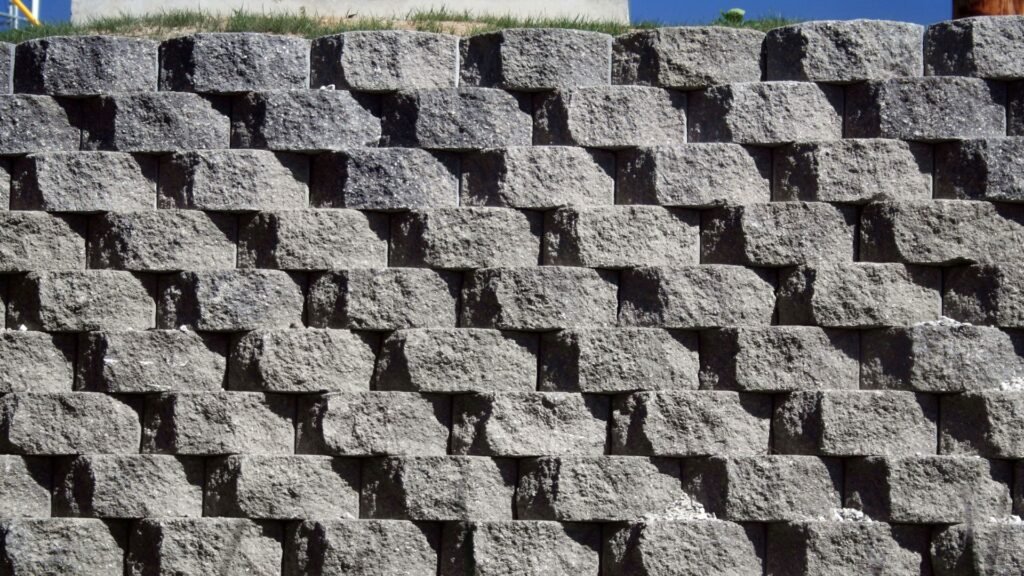
Maintenance Tips For Keystone Retaining Walls
Keystone retaining walls are a popular choice for both residential and commercial landscapes due to their durability and aesthetic appeal. However, like any other structure, they require regular maintenance to ensure they remain in top condition and continue to serve their purpose effectively. Proper maintenance not only enhances the wall’s longevity but also preserves its visual appeal, making your outdoor spaces look well-kept and inviting. Here, we’ll cover some essential maintenance tips, including routine inspections, cleaning and upkeep, and repair strategies for common issues.
Routine Inspections
Routine inspections are the cornerstone of maintaining a keystone retaining wall. Regularly checking your wall allows you to identify potential issues early on before they escalate into more significant, costly problems. During these inspections, there are several key things you should look for:
1. Cracks: One of the first signs of trouble in a retaining wall is the appearance of cracks. Small hairline cracks may not seem like a big deal at first, but they can quickly expand due to water infiltration or temperature changes, leading to more severe structural damage. Check for any visible cracks on the surface of the blocks and the joints between them.
2. Leaning or Bulging: A wall that is starting to lean or bulge outwards can indicate a potential failure in its structural integrity. This could be caused by soil pressure, poor drainage, or inadequate foundation support. If you notice your wall leaning more than it should, it’s crucial to address the issue promptly to avoid a total collapse.
3. Drainage Issues: Proper drainage is vital for the stability of a keystone retaining wall. Water accumulation behind the wall can increase pressure and lead to bowing or bulging. Check for signs of water pooling at the base or water stains on the blocks. Ensure that any weep holes or drainage systems are clear and functioning correctly to prevent water buildup.
Regular inspections, ideally twice a year, can help you catch these issues early and prevent more significant damage down the line. If you notice any of these signs during your routine checks, take action immediately to address them.
Cleaning and Upkeep
Maintaining the appearance of your keystone retaining wall is just as important as ensuring its structural integrity. A clean, well-kept wall not only looks better but also helps to prevent damage caused by dirt, moss, and other organic growth. Here are some simple cleaning and upkeep tips to keep your wall looking its best:
1. Simple Cleaning Methods: Dirt, dust, and grime can accumulate on the surface of the wall over time, dulling its appearance. To clean your wall, use a garden hose with a spray attachment or a pressure washer on a low setting to wash away surface debris. For more stubborn stains, a mild detergent mixed with water and a soft-bristle brush can be used to scrub the affected area gently.
2. Dealing with Weeds and Moss: Weeds and moss can grow between the blocks or on the surface, particularly in damp or shaded areas. To remove weeds, pull them out by the roots to prevent regrowth. Moss can be scrubbed off with a stiff brush and a solution of water and vinegar or a moss-specific cleaner. Keeping the wall dry and ensuring good sunlight exposure can help minimize moss growth.
3. Handling Stains: Stains from dirt, rust, or organic materials can detract from the wall’s appearance. For organic stains, such as those from leaves or grass, use a mixture of water and bleach (1:10 ratio) to scrub the stain. For rust stains, a specialized rust remover can be applied according to the manufacturer’s instructions. Always rinse the area thoroughly with water after cleaning to prevent any cleaner residue from causing damage.
Regular cleaning and upkeep not only keep your keystone retaining wall looking great but also help to prevent potential damage caused by moss or weed growth and stains.
Repair Tips
Even with regular inspections and cleaning, keystone retaining walls can experience wear and tear over time. Addressing minor repairs promptly can prevent more significant issues and extend the wall’s lifespan. Here are some common repair tips:
1. Quick Fixes for Common Problems: Small issues like block shifts or minor cracks can often be fixed quickly with a bit of effort. For block shifts, gently remove the displaced block, clean the area of any debris, and then reset the block with fresh adhesive. For minor cracks, a concrete patching compound can be used to fill in the gaps and prevent further water infiltration.
2. When to Consider Professional Repairs: While many minor repairs can be handled on a DIY basis, some issues require professional attention. If you notice significant leaning, large cracks, or if the wall is failing to drain properly, it’s time to call in a professional. Structural issues or extensive damage often require specialized knowledge and equipment to repair correctly. Hiring a professional ensures that the repair is done safely and effectively, preventing further problems down the line.
By following these maintenance tips, you can keep your keystone retaining wall in excellent condition for years to come. Regular inspections, proper cleaning, and timely repairs are the key to ensuring the wall remains both functional and visually appealing, adding value and beauty to your property.

Inspiring Design Ideas For Keystone Retaining Walls
Keystone retaining walls are not just functional structures that provide support and prevent soil erosion; they are also design elements that can significantly enhance the aesthetic appeal of your outdoor space. In this section, we will explore some inspiring design ideas for Keystone retaining walls, discuss popular trends, and provide real-life examples that showcase the versatility and beauty of these walls.
Popular Design Trends in Retaining Walls
When it comes to designing a Keystone retaining wall, there are numerous trends that have emerged, transforming these structures into stylish and integral parts of outdoor living spaces. Let’s explore some of the most popular design trends currently shaping the landscape architecture world:
1. Natural Stone Finishes: One of the most prominent trends is the use of natural stone finishes. Homeowners and designers are increasingly opting for materials that blend seamlessly with the surrounding environment. Natural stone gives a timeless and organic feel to the retaining walls, creating a harmonious connection with nature. This trend is particularly popular in settings where the goal is to achieve a rustic, earthy, or natural look. The use of irregular stone shapes and textures can add depth and interest to the wall, making it not just a functional feature but a focal point in the landscape.
2. Tiered and Terraced Walls: Another popular trend is the use of tiered or terraced retaining walls. This design is perfect for sloped landscapes where a single tall wall might be overwhelming or impractical. Instead, multiple smaller walls are built in a stepped fashion, creating a terraced effect. This not only provides additional stability but also offers an opportunity to create planting beds or seating areas within the wall itself. The tiered design can add dimension and layers to a garden, making the landscape appear more dynamic and visually appealing.
3. Incorporating Seating and Planters: Functionality is a key consideration in modern landscape design, and Keystone retaining walls are being designed with multipurpose features in mind. One popular trend is to incorporate built-in seating or planter boxes into the retaining wall structure. This design choice serves a dual purpose: it provides additional seating for outdoor gatherings and offers space for gardening. Whether you are looking to create a cozy seating nook or a vibrant floral display, integrating these elements into your retaining wall design can enhance both the form and function of your outdoor space.
4. Curved and Organic Shapes: Gone are the days of straight, rigid retaining walls. Curved and organically shaped walls are becoming increasingly popular as they provide a more natural flow and blend more seamlessly into the landscape. These designs mimic the natural contours of the terrain, creating a softer and more inviting look. Curved walls can also create a sense of movement and guide the eye through the landscape, making the outdoor space feel larger and more interconnected.
5. Sustainable and Eco-Friendly Designs: With growing awareness of environmental concerns, many homeowners are seeking sustainable and eco-friendly design options for their retaining walls. This trend includes using locally sourced materials, integrating rain gardens or permeable surfaces for better water management, and designing walls that promote biodiversity. These sustainable practices not only reduce the environmental impact but also create unique and beautiful landscapes that thrive over time.
Real-Life Examples of Keystone Retaining Walls
To truly appreciate the beauty and functionality of Keystone retaining walls, let’s look at some real-life examples that highlight their versatility and design potential:
- The Smith Residence – A Rustic Retreat: At the Smith residence, the homeowners wanted to create a rustic outdoor living area that blended seamlessly with the surrounding wooded landscape. The designers opted for a Keystone retaining wall with a natural stone finish. The wall was built in a curved shape to follow the natural slope of the land, and integrated seating areas were included to provide space for relaxation and entertainment. The result is a stunning outdoor retreat that feels like an extension of the natural surroundings, providing both function and beauty.
- The Johnson Garden – Modern Minimalism: The Johnson garden is a perfect example of how a Keystone retaining wall can be used to create a modern and minimalist outdoor space. The designers chose a sleek, straight-line design with a smooth concrete finish for a contemporary look. The retaining wall was tiered to create a series of small garden beds, which were filled with carefully selected plants to add color and texture. The clean lines and minimalist aesthetic of the wall complement the modern architecture of the home, creating a cohesive and stylish outdoor environment.
- The Thompson Backyard – Family-Friendly Fun: For the Thompson family, the goal was to create a backyard that was both functional and fun for their young children. The designers used a tiered Keystone retaining wall to create different levels in the backyard, which included a play area, a vegetable garden, and a seating area. The retaining walls were designed with built-in benches and planters, making the space versatile and family-friendly. The different levels provide opportunities for various activities, while the built-in features maximize the use of space, making it a perfect environment for family gatherings and play.
Testimonials and Quotes from Homeowners
The following testimonials from homeowners illustrate the positive impact that Keystone retaining walls can have on outdoor spaces:
“We were looking for a way to create more usable space in our sloped backyard, and the Keystone retaining wall was the perfect solution. Not only did it provide the support we needed, but the design also added a beautiful element to our garden. We love spending time outdoors now!” – Emily and Mark, Homeowners
“The team did an amazing job with our retaining wall. We wanted something that looked natural and blended in with the environment, and they delivered. The stone finish is gorgeous, and the wall has become a focal point of our backyard.” – Sarah, Homeowner
“Our new retaining wall has completely transformed our outdoor space. The integrated seating and planters were a great idea, and it’s become our favorite spot for entertaining guests.” – John and Lisa, Homeowners
Keystone retaining walls are much more than just functional structures. They offer endless design possibilities, from natural stone finishes to curved and terraced shapes, allowing homeowners to create outdoor spaces that are both beautiful and practical. Whether you are looking to add a rustic touch to your garden or create a modern, minimalist landscape, there is a Keystone retaining wall design that can help you achieve your vision.

FAQs: About Keystone Retaining Walls
What are Keystone retaining walls?
Keystone retaining walls are a type of modular wall system made from interlocking concrete blocks designed to retain soil, manage slopes, and enhance landscape aesthetics. These walls are known for their durability, versatility, and ability to blend with various outdoor environments, making them a popular choice for both residential and commercial landscaping projects.
What are the benefits of using Keystone retaining walls?
Keystone retaining walls offer numerous benefits, including erosion control, structural stability, and aesthetic enhancement. They are low-maintenance, durable, and come in various designs and colors, allowing them to complement different architectural styles. Additionally, their modular design makes them easy to install and adapt to various landscape needs.
How do I choose the right type of Keystone retaining wall for my project?
Choosing the right type of Keystone retaining wall depends on your specific needs, such as the height and length of the wall, the type of soil, the slope of your terrain, and your aesthetic preferences. Gravity walls are ideal for shorter walls, while reinforced walls are better for taller structures. Consulting with a landscape professional can help you select the best option for your project.
Can I install a Keystone retaining wall myself, or should I hire a professional?
While Keystone retaining walls are designed for ease of installation, the complexity of the project, such as the wall height and soil conditions, can determine whether it’s a DIY project or requires professional help. For small, straightforward projects, DIY installation is feasible. However, for larger or more complex projects, hiring a professional is recommended to ensure safety and structural integrity.
What materials are used in Keystone retaining walls?
Keystone retaining walls are typically made from high-quality concrete blocks designed for durability and strength. These blocks come in various shapes, sizes, and finishes, including textured or smooth surfaces, and can mimic natural stone or other materials to suit different aesthetic preferences.
How long do Keystone retaining walls last?
Keystone retaining walls are designed to be long-lasting, with a lifespan that can exceed 50 years when properly installed and maintained. Their durability is due to the high-quality materials used in their construction and their resistance to weathering, erosion, and other environmental factors.
What are the maintenance requirements for Keystone retaining walls?
Keystone retaining walls are relatively low-maintenance. Regular inspections for signs of shifting, cracking, or drainage issues are recommended. Cleaning the wall surface to remove dirt, debris, and plant growth will help maintain its appearance. Minor repairs, such as replacing displaced blocks, can be done as needed to ensure the wall’s stability.
Are Keystone retaining walls environmentally friendly?
Yes, Keystone retaining walls can be considered environmentally friendly. They are often made from sustainable materials and designed to promote proper drainage, reducing soil erosion and managing water runoff. Their durability also means fewer materials are required over time, contributing to sustainable landscape practices.
What is the cost of building a Keystone retaining wall?
The cost of building a Keystone retaining wall varies depending on factors such as wall size, height, design complexity, and materials used. On average, costs can range from $20 to $40 per square foot for materials and installation. Additional costs may include site preparation, drainage solutions, and professional labor if required.
What are the common mistakes to avoid when installing a Keystone retaining wall?
Common mistakes when installing a Keystone retaining wall include inadequate site preparation, improper base installation, neglecting proper drainage, and failing to compact the soil adequately. These errors can lead to wall instability, water damage, and structural failure. Following a detailed installation guide or consulting with a professional can help avoid these issues and ensure a successful project.
Conclusion
In conclusion, this post has highlighted the key advantages of choosing Keystone retaining walls for your landscaping needs. We’ve explored their durability, aesthetic appeal, and versatility, which make them an ideal choice for a variety of outdoor projects. By opting for Keystone retaining walls, you’re investing in a solution that not only enhances the beauty of your landscape but also provides long-term stability and value. Now is the perfect time to start planning your project or consult a professional to bring your vision to life. We encourage you to take the next step—whether that’s reaching out for a consultation, sharing your own experiences in the comments, or simply spreading the word to others who might benefit from this information. Your journey toward a more beautiful and functional outdoor space begins here!
This blog post was brought to you and referenced by https://builderconnect.co.nz/blog/ultimate-guide-to-keystone-retaining-walls-nz/.
About the Author:
Mike Veail is a recognized digital marketing expert with over 6 years of experience in helping tradespeople and small businesses thrive online. A former quantity surveyor, Mike combines deep industry knowledge with hands-on expertise in SEO and Google Ads. His marketing strategies are tailored to the specific needs of the trades sector, helping businesses increase visibility and generate more leads through proven, ethical methods.
Mike has successfully partnered with numerous companies, establishing a track record of delivering measurable results. His work has been featured across various platforms that showcase his expertise in lead generation and online marketing for the trades sector.
Learn more about Mike's experience and services at https://theleadguy.online or follow him on social media:

